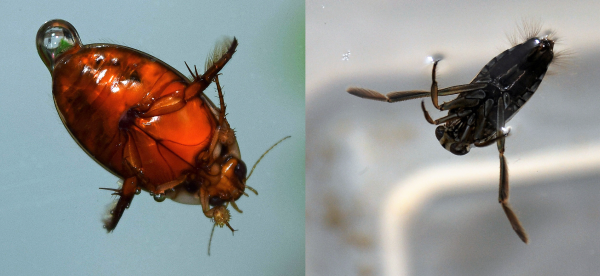 November 8, 2019
November 8, 2019
One of the truisms in Nature is that habitat patches in all types of systems – terrestrial, aquatic, marine – vary in size, whether it is host plants for plant-eating insects, prairie remnants for grassland birds, coral reefs for marine fish, or ponds for aquatic insects. In all these systems both average population size and number of species tend to increase with patch size. This relationship is partly attributable to reduced extinction rates in larger patches, higher passive colonization rates as a result of larger “targets,” and possibly increased cue intensity resulting in easier detection. When considering habitat selection, however, organisms may conceivably display active preferences for patches of different size. Thus, patch size could function as another component of patch quality, along with factors like predation risk and resource level. Previous studies of aquatic insects by Dr. William Resetarits, Professor of Biology and Henry L. and Grace Doherty Chair in Freshwater Biology Research have shown a strong, consistent pattern (increasing diversity with patch area) that may arise from a variety of processes, requiring an experimental approach to disentangle the ecological drivers.
Resetarits and his students, working at the University of Mississippi Field Station, recently manipulated both patch quality (fish presence/absence) and patch size, and found that, in contrast to expectations of no preference or overall preference for large patches, insect species showed strong and highly variable active preferences for patch size. Most insect species avoided fish, but differentially colonized fishless patches of different size, resulting in different colonist species composition and relative abundance across the size gradient. The combination of environmental factors (climate, resources, competitors, predators and parasites) that describe where a species can survive is referred to as its ecological niche. Thus, for colonizing aquatic
insects, patch size functions as a niche dimension that generates spatial segregation and reduces the potential for intense species interactions (both competition and predation) within the insect assemblage. Establishing patch size as a niche dimension changes how we view the role of patch size variation in supporting conservation of local and regional diversity, as well as the importance of preserving patch size variation as a driver of diversity. This important discovery was recently published in the peer-reviewed scientific journal The American Naturalist.